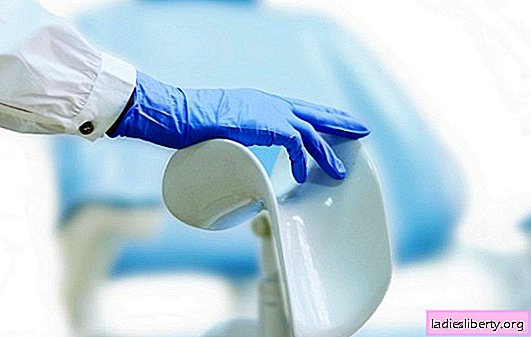
A hernia of the lumbar spine is the most frequent and severe complication of long-term osteochondrosis.
Every third person on the planet is affected by a similar ailment; approximately 45% of all patients develop hernias on the background of osteochondrosis.
The treatment of hernias is almost always radical, however, doctors prefer to observe and keep the pathological process in check. To achieve this, neurosurgeons recommend regularly taking courses of drug therapy, physiotherapy and exercise therapy.
Gymnastics is almost a panacea in the prevention of exacerbations of intervertebral hernias. It is important to do it right and at the right time. What exercises are most effective and how to do gymnastics correctly? The article provides descriptions of exercises for lumbar hernia of the spine.
What are the objectives of the exercise complexes?
When prescribing exercise therapy complexes, the doctor pursues several goals at once:
• Strengthen the muscle corset supporting the diseased spine. With excessive relaxation, the muscles become "lethargic", hernial protrusion of the disc becomes even more noticeable and dangerous.
• Remove excessive muscle tension. Not all muscles are pathologically relaxed. Some groups, by contrast, are tense beyond measure. This most often causes additional pain. To cope with pain, it is necessary to remove muscle hypertonicity.
• Improve nutrition of affected vertebral structures. Exercise has a beneficial effect on the blood supply to the discs and the entire spine as a whole.
The simplest exercises for lumbar hernia
Despite the fact that all the sets of exercises presented below are considered simple, they do not become less effective from this.
Therapeutic gymnastics complex №1
This complex is designed to be performed by persons during an exacerbation of the disease. As a preventive measure, it can also be performed during remission.
1) Take a horizontal position. Extend your legs, spread your arms, forming a pose similar to the "star" pose. According to the “one” account, put the right foot on the left (“throw” the foot on the foot), according to the “two” account, turn the pelvis to the left, as if twisting the lower back. The head at this moment must be turned to the right. The back should remain pressed to the floor. Then return to the original position.
2) Lie down. Relax as much as possible. Hands and feet should be in a natural position. Put your right foot on your left. Now, when you inhale, you should twist the lower back to the left, stay in this position. The next step is to return to the original position.
3) Take a horizontal position. Put the heel of the left foot on the fingers of the right. Rest against. Now, as in the previous exercises, you need to twist to the left, while unfolding the neck in the opposite direction. Repeat several times.
4) Take an identical pose. In this exercise, speed plays a big role. The main difference from exercise "2" is the lack of the need to stay in a twisted position. After twisting, you should immediately return to the starting position and immediately perform the exercise, turning in the opposite direction.
5) Take a pose similar to those that were in previous exercises. Bend your legs at the knees, press to the stomach. Next, you need to twist to the left, then to the right.
6) The method of doing the exercise is the same. Now it is important to place the foot of the foot on the knee of the opposite limb and perform twisting.
This set of exercises is aimed at training the muscles of the lumbosacral region, as well as at increasing the flexibility and mobility of the spinal column.
Gymnastics complex №2
This complex is considered classic. It was developed over 20 years ago, however, to this day, it is precisely such exercises that are practiced in LFK offices throughout the country. Gymnastics is great for all patients, but some exercises in the exacerbation phase should be done carefully.
1) Get up. Relax your whole body as much as possible. Legs at shoulder level, calm, even breathing. Clench your fists. Now, clasp your hands in this way behind your back and press them against the lumbar region (with your fists placed one on top of the other). On inspiration, a vertical movement (from top to bottom) is made by fists, on exhalation - the same movement, but in the opposite direction (from bottom to top).
2) Lie down. Straighten up. Hands are "at the seams", legs are straight. Take a deep breath. In this case, it is necessary to maximize the tension of the abdominal muscles, and hold your breath. Exhale calmly and relax.
3) Sit in a high chair. Feet at shoulder level. Hands lay behind the lower back. On account of "one" to make a diagonal tilt of the body to the right. On account of the "two" to return the body to its original position. Now repeat the same, leaning in the other direction.
4) Take a horizontal position. Raise your hands above your head, relax. According to the count, “fold” to bend in the belt, with the left hand reach for the socks. On account of the "two" return to the starting position. Repeat with the other hand.
5) Squat. Heels should be firmly pressed to the ground. Extend your arms in front of you. With an effort to move the upper limbs forward, as if wanting to reach out for something. When done properly, fatigue should be felt in the shoulders.
Exercises "3", "5" must be performed with great care during periods of exacerbation.
Gymnastics complex №3
This complex is suitable for all patients, but is more designed for training during the period of "subsidence" of pathological symptoms.
1) Take a horizontal position. Bend your legs at the knees. According to the account, "one" raise the pelvis above the floor, linger in this position for 2-5 seconds. Then you need to return to the starting position.
2) Take a standing position. Legs at shoulder level, hands on waist. Start making circular movements with the pelvis. It is important that the legs remain motionless, only the pelvis "works". Repeat the same exercise rotating counterclockwise.
3) Lie down. Hands "at the seams", legs straight. According to the account, "one" raise the leg as high as possible above the floor. Hold up in a pose. On account of the "two" to return the leg to its original position. Then repeat the exercise with the other limb. Important! This exercise is not suitable for people with pinched nerve roots.
4) Get up. According to the account, "one" lean to the right. On account of the "two" return to its original position. Following you must also bend to the other side. You should not be zealous, the amplitude and depth of inclination should be convenient for the patient. Violence over one's own organism will not lead to anything good.
The technique of exercises can be learned from the video:
The most effective exercises for lumbar hernia
In cases where health allows, you can go to more complex and effective sets of exercises.
Gymnastics complex №1
1) Take a horizontal position. The breathing is even, rhythmic. In this exercise, breathing movements are performed with the participation of the diaphragm. Start breathing in "stomach", do not use the chest. According to the account, "one" - inhale, "two" - exhale. As you exhale, draw your stomach into yourself. It is not necessary to inflate the stomach too much.
2) Lie down. Hands "at the seams", legs straightened. According to the count of "times" to bend the leg at the knee, the other leg remains straight. On account of the "two" take the straight limb in the opposite direction. On account of the "three" bend the second leg. Then return to the starting position and repeat the same with the other limb.
3) Take a horizontal position. Both legs are straight, arms folded into the lock and are under the head. On inhalation, bend both legs at the knees, cross legs. On exhalation, return the legs to their original position. Now you need to repeat the same thing with the opposite limb.
4) Lie down. Relax. Bend your arms at your elbows and put on the floor, slightly raise your legs above the floor. Make circular motions with brushes and feet, first clockwise, then counterclockwise. To perform this exercise, it is recommended to put a roller or a small pillow under the lower back. So the load on the lower back will be less.
5) Take a lying position. According to the account, "one" throw a foot on a foot. On account of the "two" raise the bent leg up to the limit (as far as possible). Stretch your arms to your raised leg. On account of the "three" to return the legs to their original, straight position.
6) Repeat exercise "1", take a breath and relax.
Therapeutic gymnastics complex No. 2
1) Take a horizontal position. Arms and legs apart to form a star. Take a deep breath. Bend one leg at the knee and pull it to the stomach, exhale. If you can’t squeeze your leg, you should help with your hands. Then return to the original position. Repeat the exercise with the second leg.
2) The position is identical. On account of "one" "hug" yourself with your hands. Turn the feet along the axis so that the socks look at each other. This exercise helps strengthen the muscles of the lumbosacral region.
3) Lie down. Hands "at the seams", legs straightened. The whole body should be relaxed. On inspiration, slightly raise your body, trying to examine the feet. Legs should be motionless. Return to starting position. Repeat several times.
4) Take the same pose. Bend your legs at the knees, press the feet firmly against the floor. At the expense of "once" twist the body, rise and touch the palm of the opposite knee.
5) Lie on your back. Raise the basin slightly above the floor and lower it sharply.
6) Lie on your stomach. Straighten your legs. Inhale and bend one leg at the knee. Then bend the second leg.
The presented complexes can be performed only in a state of remission.
How to do exercises with lumbar hernia of the spine
In the network, as well as in specialized print media, there are many sets of exercises. However, few warn their readers. Meanwhile, there are several rules for practicing therapeutic exercises.
• Do not be too zealous. Excessive twisting, a lot of unnecessary movements, all this will lead to the opposite result.
• Exercises should be performed slowly, thoughtfully and smoothly. Only then will gymnastics be safe and effective.
• It is necessary to carefully monitor the rhythm of breathing and the heart rate. Ideally, neither one nor the other should become more frequent. If such an effect is observed, this is the basis to facilitate the program of classes.
• You can do it at home, but still it is much better to undergo the exercises under the supervision of a physical therapy doctor in a small group.
• There should be no pain. Pain is a signal of trouble. Therefore, a specific exercise is not suitable.
• First you need to start with a small number of repetitions. 3-5 times will be enough.
• In order to get a result, it is important to do gymnastics several times a day.
Following all the recommendations, it is possible to achieve a long and stable remission of lumbar hernias and osteochondrosis.











